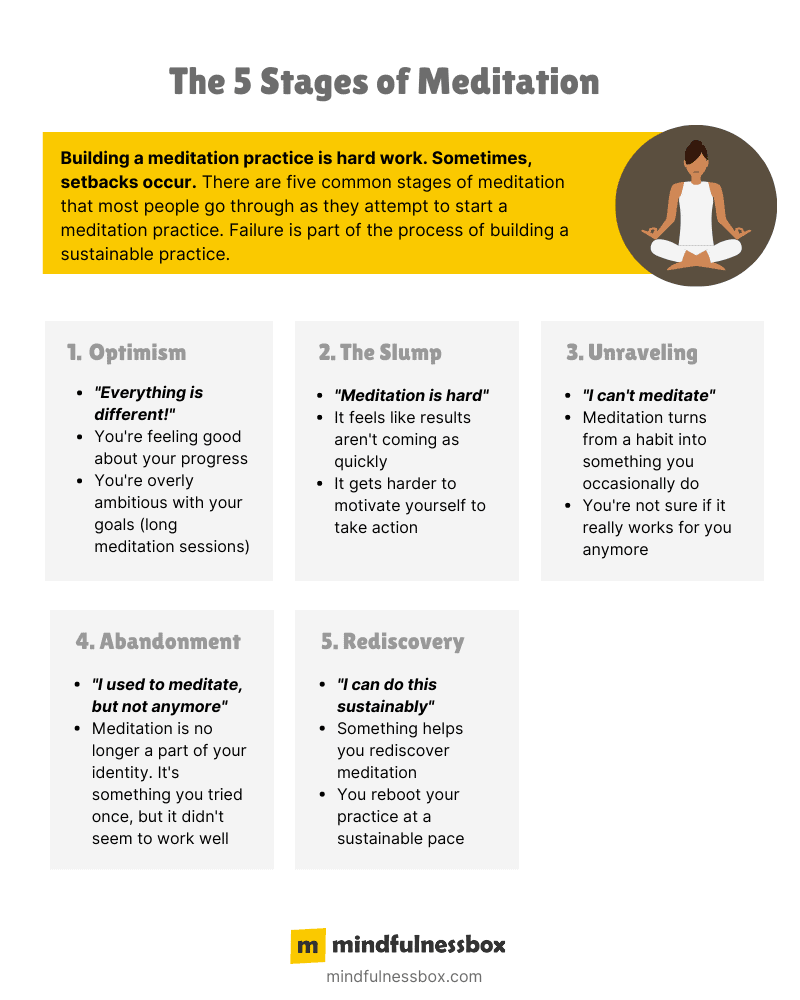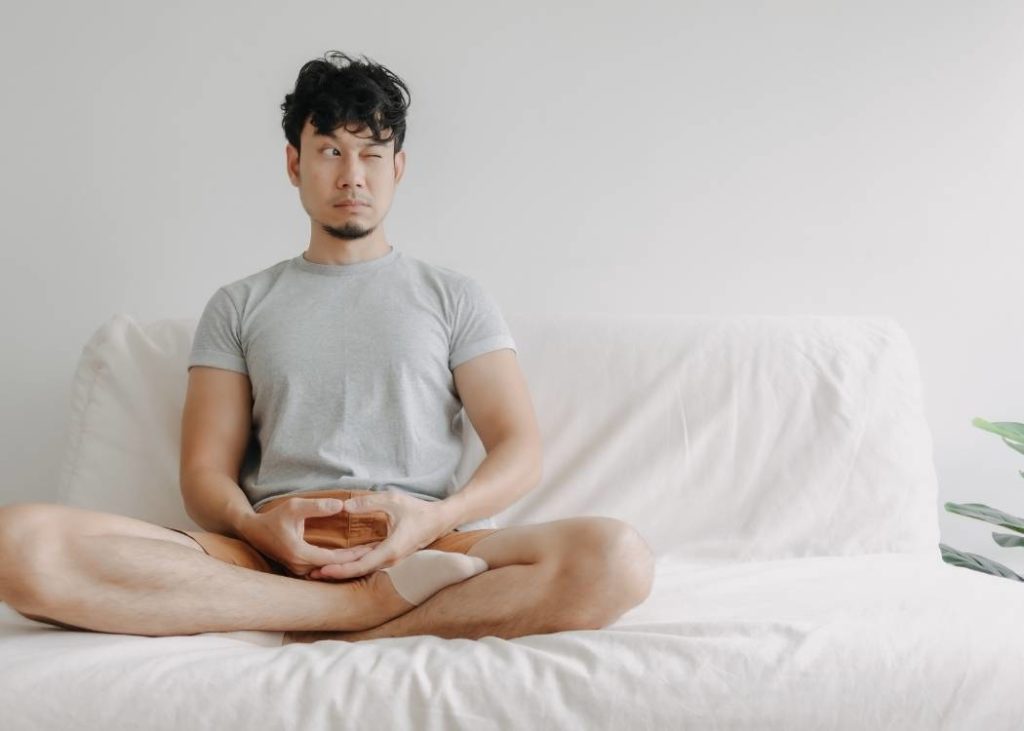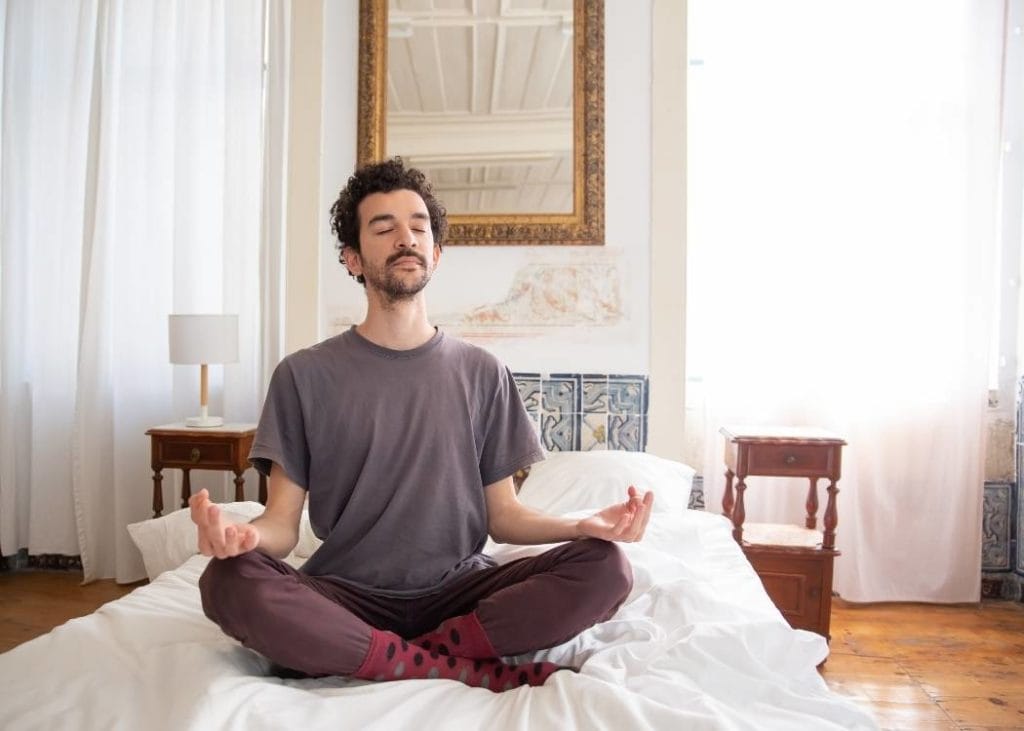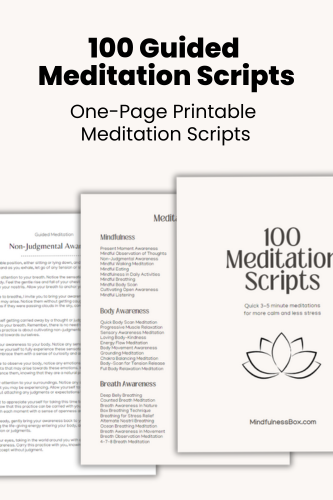To avoid quitting meditation, understand that you’ll experience natural changes in motivation over time. Then, just ride the waves. I’ve given these motivational phases catchy names and organized them into five stages: Optimism, The Slump, Unraveling, Abandonment, and Rediscovery.
Building a meditation practice is hard work. Sometimes, setbacks occur. Failure is part of the process of building a sustainable meditation practice.
These 100 meditation scripts were created to help beginner and intermediate meditators practice key mindfulness concepts like self-love, forgiveness, gratitude, and inner peace.
Designed to fit into busy schedules, each meditation script lasts 3-5 minutes. Perfect for starting or closing a group meditation; for yoga, coaching, or therapy sessions; or for your personal meditation practice.
Have you ever been trying to eat healthier, and then (inexplicably) found yourself in front of the pantry eating potato chips?
Me too.
I wish it wasn’t this way, but falling off the wagon is usually a part of the process. To risk a case of too many metaphors, it’s all about getting back on the horse.
This applies to mindfulness and meditation as much as it does any other habit.
The 5 Stages of Meditation

Let’s talk about the journey of incorporating meditation into your life, why failure is part of the process, and how you can build a sustainable practice. Setting the right expectations is key.
Usually, there are a few stages to this process.
Stage 1: Optimism (“With meditation, everything is different!“)
When you start your meditation journey, it’s easy to have the feeling that you’re entering a new chapter of your life.
Before, you were mindless and unaware. Now, you float serenely above the chaos of everyday life.
You’re ambitious with your goals. You figure, why not one hour of meditation in the morning and another in the evening?
That’s exactly what I attempted to commit to after my meditation retreat.
For a short time, the optimism stage is sustainable.
Then, life comes at you and the cracks in your plan start to show.
Stage 2: Hitting a slump (“Meditation is hard..”)

After an initial burst of effort, it starts to become clear that your rate of practice isn’t sustainable, and that the early euphoria wasn’t quite justified.
Everything isn’t different now. In fact, most things are the same.
As it starts to become clear that you’re not getting the results you hoped for, it becomes harder to motivate yourself to take action. You still do, but less and less.
Plus, meditation is hard. Sitting there observing your thoughts and pulling your attention back to the present moment takes real energy and concentration. You start to develop a Pavlovian aversion to meditation.
The early energy and optimism has been drained from the experience.
Still, you push onwards.
Stage 3: Unraveling (“Why can’t I meditate?“)
After enough time in a slump, it’s easy to practice meditation less and less until it goes from a habit to something you occasionally remember to practice (when you have time).
Once a transformative part of how you saw your life, mindfulness and meditation start to feel like a less and less relevant sideshow.
When you’re angry or irritated, it only rarely occurs to you to practice meditation or to pause and take stock of your awareness.
You’re not sure if it works for you now. Maybe it never did.
Stage 4: Abandonment (“I used to meditate, but not anymore“)
In the abandonment stage, mindfulness and meditation shift to something that you “used to do.”
They were a part of your old identity, but you’ve now moved on from them through the simple act of not giving attention to the practice.
Maybe it feels like you have one less tool in your toolkit. But generally, you don’t think much about mindfulness and meditation.
But in stage 5, something happens to reactivate your need for the clarity that comes with meditation.
Stage 5: Rediscovery (“I can do this sustainably“)

Sometimes, after abandoning meditation, you reach some kind of breaking point, that compels you to revisit the practice. Or, you simply receive a reminder at the right time from a book or a trusted friend.
Whether through necessity or serendipity, you’ve restarted your mindfulness and meditation practice.
It doesn’t feel quite as fresh or exciting as it did at the beginning, but it feels more sustainable.
You’re careful not to set extreme goals. Instead of one hour a day, you’re content with making time for even a few minutes per day to meditate.
When you fall into a state of unawareness in your daily life, you’re careful not to beat yourself up. These things happen.
Meditation motivation can come and go
When you’re building a mindfulness practice (just like when you’re dieting), excess is self-correcting.
If you’re setting outlandish goals for progress and beating yourself up for moments where you lack awareness, you’ll start to abandon your practice.
In the same way, if you’ve abandoned your practice and have slipped into a daily experience that’s much less mindful, you’re likely to have a moment of failure and self-reflection that propels you back into your practice.
Spend enough time pushing too hard, or not pushing at all, and you’re likely to motivate yourself to move in the other direction.
How to build a sustainable meditation practice

If you’re kicking off your mindfulness practice for the first time, my first recommendation to you is to ease back on the gas.
Don’t go too hard, too soon, because you risk burning out and losing valuable years before rediscovering your practice in a moment where it’s sorely needed.
Instead, practice only as much as feels sustainable to you, whether that’s two minutes a day or 20 minutes a day.
And make sure not to give yourself a hard time about moments of mindlessness, whether during meditation or during everyday life.
Those moments are an inevitable part of life, and when you notice them, it’s a win.
Set the right expectations for meditation
Finding balance is all about setting the right expectations.
Meditation isn’t a quick fix. It’s a lifelong pursuit.
You’ll get more benefit out of 10 minutes a day of meditation over a lifetime than you will from two hours a day of meditation for a month.
The goal is consistency over a lifetime—not a mad dash towards fast progress.
Remember that progress in mindfulness can take months, and sometimes it’s only years later that you realize “Yeah, that worked. I’m different now.”
Further reading
More more on building a meditation practice to last, check out these articles:
- 25 Ways Meditation Can Change Your Life
- How Long Does Meditation Take to Work
- How Long Should You Meditate?
- 5 Signs of Progress in Meditation

My mindfulness practice kicked off in 2016 with a ten-day silent retreat. Since then, I’ve read dozens of books about mindfulness and completed hundreds of hours of meditation. Thinking about what makes humans happy, calm, and peaceful is endlessly fascinating to me.


